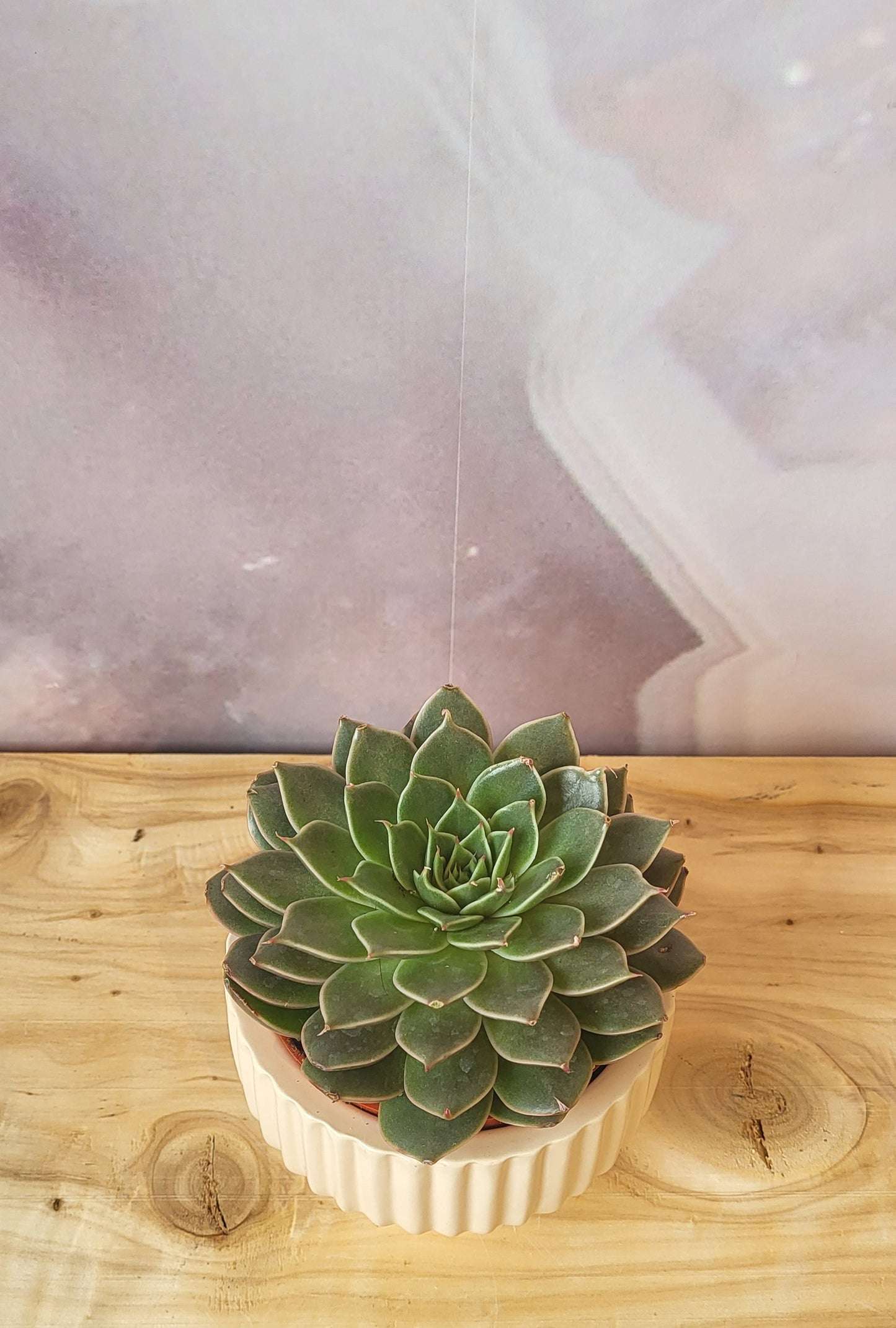Calabrese Greenhouse, Inc.
Succulent Echeveria 4"
Succulent Echeveria 4"
Couldn't load pickup availability
*Does not include planter pot
Light
Echeverias require a substantial amount of light to thrive. They need at least four to five hours of bright, direct sunlight daily—ideally six.1 If echeverias do not receive full sun, they will become elongated and leggy, and it is unlikely they will flower. Move your echeveria outdoors during the summer months to help it flourish. If you move your plant outside after overwintering indoors, harden off the plant, giving it a gradual transition. Intense afternoon sunlight can cause sunburn, so place your plant where it receives a bit of shade when the sun is strongest.
Soil
Echeverias require a well-draining, porous growing medium to keep excess moisture away from the roots.1 Standard cactus potting mixes, which can be found at most nurseries and garden centers, are sufficient for echeverias. You can create a cactus mix by combining three parts of regular potting soil with two parts of coarse sand and one part of perlite. Echeverias make ideal houseplants and grow well in garden beds, as long as the soil is well drained, and the pH is 6.0 or slightly acidic.
Water
Watering is the most critical aspect of proper echeveria care. Echeverias, like most succulents, do not require much water, but they also don't like to be too dry. If the leaves begin to wrinkle, it's an obvious sign the plant needs water. It is better to under-water echeverias than to overwater them, as they can quickly succumb to root rot if overwatered.1
Wait until the soil has dried out completely before watering your echeveria, and then give it a good soaking by letting the water stream through the pot's drainage holes. Depending on the size of the plant, it could be 1/2 cup to 1 cup of water every seven to 10 days during the growing season. If you use a saucer under the pot, make sure to empty any standing water that drains through. Echeveria will need to be watered during the summer months more frequently than in winter. In winter, water just enough to prevent wrinkled leaves, about once a month.
Temperature and Humidity
Echeverias thrive in hot, dry conditions. They do not tolerate cold temperatures or cold drafts well. Too much humidity can lead to root rot.1 The average household temperature and humidity levels are sufficient for echeverias but do not place them in a humid location, like a bathroom or laundry room. Most echeverias are cold hardy to USDA zone 9a and can grow in the ground with average winter temperatures no colder than 50 F. In wintery weather regions, move the plant inside when frost threatens.
Fertilizer
Regular fertilizing is not a requirement for growing echeveria, as they are accustomed to growing in nutrient-poor soil. They are susceptible to fertilizer burn if over-fertilized.2 Occasional fertilizing during the spring and summer can help echeverias during their active growing period but be cautious. Use a cactus and succulent fertilizer or a controlled-release balanced 20-20-20 liquid fertilizer diluted two to four times more than usual. Use a low-nitrogen fertilizer for young plants.
Share


